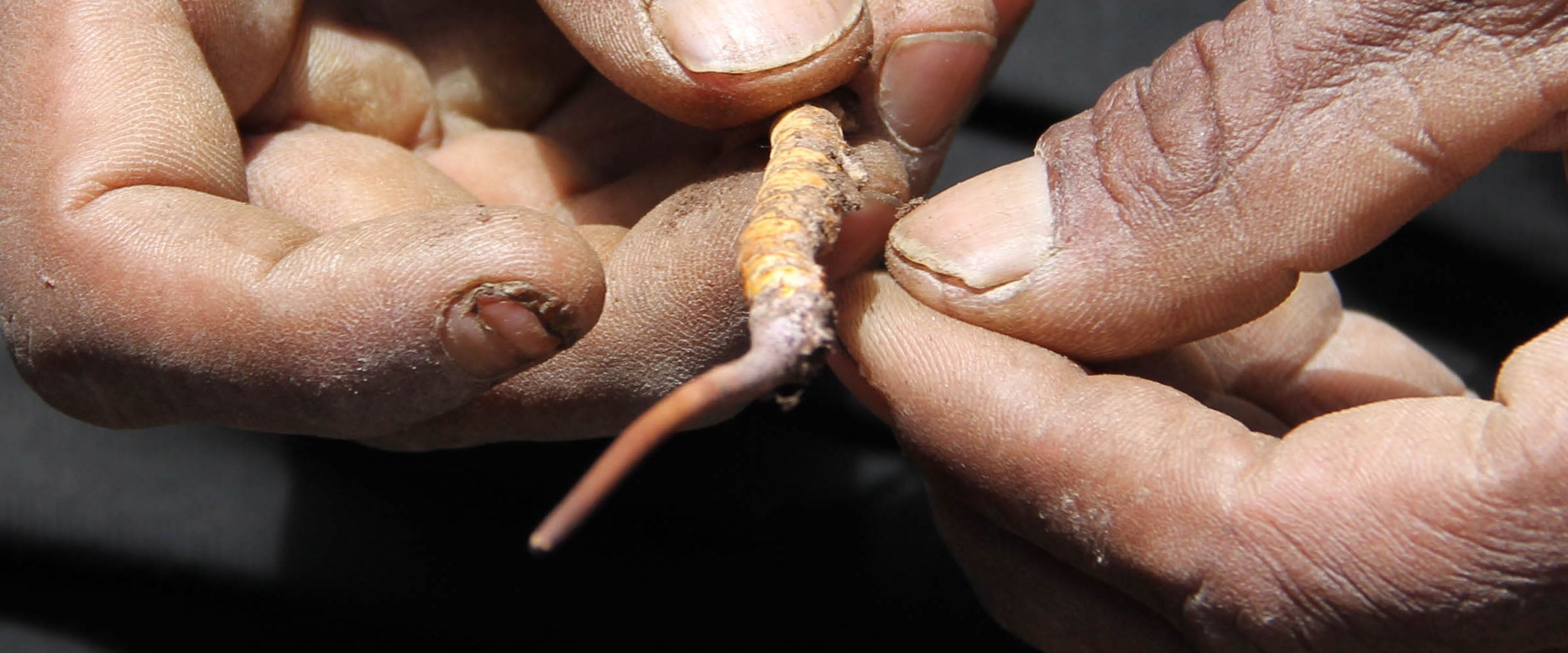Imagine if, after all the bloodshed and loss of life, Helen of Troy turned out to be pretty average looking. That’s basically the premise at the center of this report from Phys.org in which a scarce caterpillar fungus nicknamed “Himalayan Viagra” has people in China and Nepal killing each other, despite the fact that, scientifically speaking, it doesn’t in fact give you raging boners.
In 2013, News.com.au reported that some of the suppliers of “Himalayan Viagra” were involved in clashes over the rights to collect the fungus that left two people dead in the rolling hills of Tongren, known to Tibetans as Rebkong. “It wasn’t in demand before, but now we realise its value, we have lots of fights between neighbours,” Zande Gongba, a seller of the fungus in Tongren (a remote town in the northwestern province of Qinghai) told News.com.au. In 2009, seven young Gorkha men were also found dead just outside their tiny town, possibly for their supply of the fungus.
So what is this stuff, and why the fuss? Formally known as Ophiocordyceps sinensis but more commonly referred to as yarchagumba, it’s ostensibly a magical caterpillar fungus that’s becoming more scarce due to climate change. According to this article in Scientific American, it’s a traditional Chinese medicine (TCM) that, when boiled and added to tea or soup, can supposedly act as an aphrodisiac, cure cancer and fight fatigue. “Although the fungus has been used in TCM for centuries, demand took off after 1993 when three female Chinese runners broke world records and their coach told the media he had fed the athletes yarsagumba in a soup of turtle blood,” per the same report.
“It is ‘one of the world’s most valuable biological commodities, providing a crucial source of income for hundreds of thousands of collectors,’ said the report in the Proceedings of the National Academy of Sciences, a peer-reviewed U.S. journal,” reports Phys.org. “In recent decades, the fungus has skyrocketed in popularity and prices have soared — it can fetch up to three times the price of gold in Beijing, researchers say.”
As per the same Scientific American article, Yarsagumba is harvested by Nepalese villagers, who sell it for more than $25 a gram (retail prices can reach $150 per gram or more). But due to lower levels of snow and rain in recent years, along with higher temperatures, villagers who once collected 150 to 200 pieces of the fungus in a month are now only finding only 10 to 30 pieces.
“In a project synopsis for a study funded by The Rufford Small Grants Foundation, [Uttam Babu Shrestha, a PhD student at the University of Massachusetts Boston] wrote that the depletion of the fungus would severely impact the economy and culture of the people who rely on it,” reports Scientific American. “The study, published February 1 in Nature, calculated the global market for yarsagumba to be between $5 billion and $11 billion.” Additionally, a 2008 study in Economic Botany found that fungus collection represented 40 percent of the rural cash income in the Tibet Autonomous Region, where it is also collected.
Doesn’t matter where you live, it seems — dick drugs are big money. But — and I can’t stress this enough — the drug has never shown any scientific evidence of actually helping guys get erections. “I’ve never even heard of it,” says board-certified urologist Jamin Brahmbhatt when I ask him about the feisty fungus.
It does offer some health benefits, however: “Studies reveal that caterpillar fungus has antibiotic properties,” reports Medical Daily. “The herb is used to treat lung and respiratory infection.” It’s also been found effective against tuberculosis as well as in treating leprosy.
None of which, of course, makes for a name as catchy as “Himalayan Viagra.”

